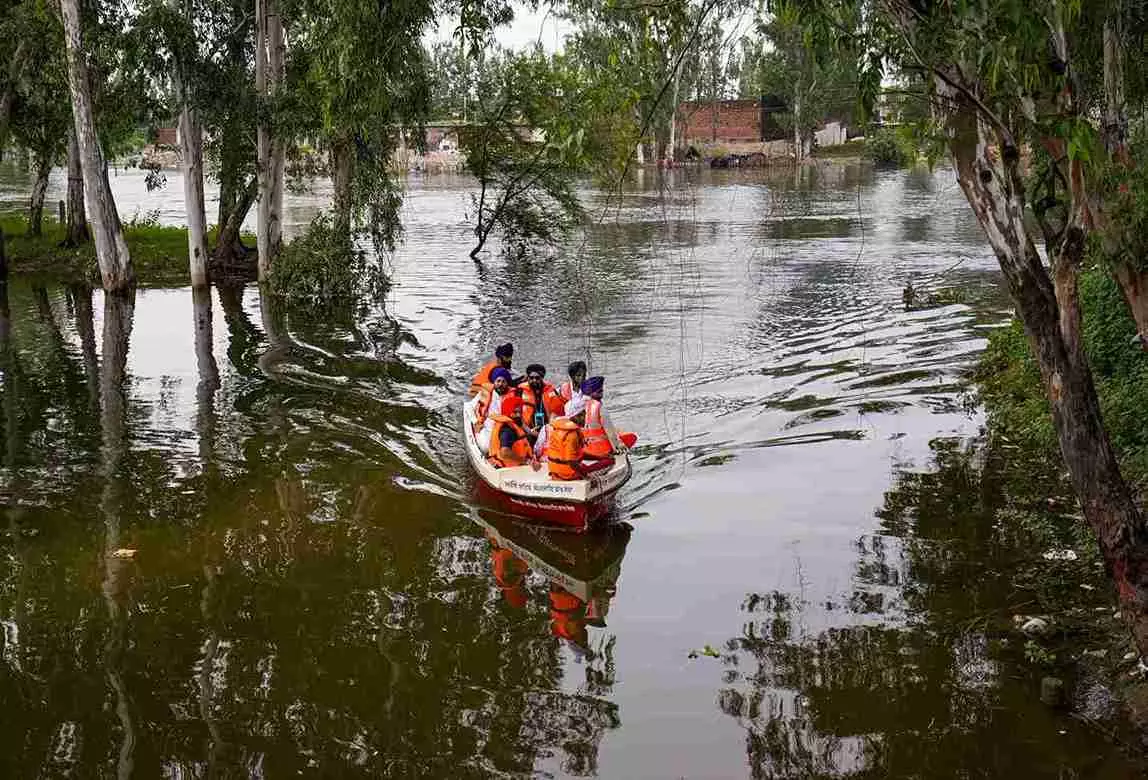
Punjab floods: A natural disaster or man-made tragedy?
The massive floods were allegedly caused by the release of 1.4 million cusecs of water in eight hours and the poor maintenance of the Madhopur Barrage gates

The massive floods that struck Punjab — the worst in 37 years — have shaken the entire state. All 23 districts have gone under water, displacing a huge number of people, destroying tonnes of crops in the fields, and killing a significant number of livestock.
Questions have now begun to arise about what caused such a devastating flood in Punjab. The Federal team, which is present at Ground Zero in Punjab, found that the epicentre of this flood was the Madhopur Barrage in Pathankot.
People claim 1.4 million cusecs of water were suddenly released from the Madhopur Dam, located on the border of Punjab and Jammu and Kashmir, in just eight hours. The sheer volume of water was too much for all the gates of the barrage to handle, resulting in the breaking of two gates. This marked the beginning of the flood, which did not stop until the entire state was submerged.
Therefore, the big question now is whether the floods in Punjab are truly a natural calamity or a case of sheer human negligence.
Also read: Floodwater recedes, but leaves Punjab villagers coping with its aftermath
Two-fold neglect
People are angry because of, on the one hand, the government’s inaction, and on the other, the release of 1.4 million cusecs of water from the Madhopur Barrage in just eight hours.
They are asking why the water was held back in the Madhopur Barrage for such a long time when heavy rainfall occurred and rivers were overflowing. Did the state government, the administration, and the officials of the barrage not realize that if the water accumulating in the barrage was not released in a timely manner, a flood could occur?
People are also questioning why, when the decision was made to release the water, it was done in such a way that 1.4 million cusecs of water were released all at once. Not only that, the conditions of the gates of the barrage were also not taken into account, which is why two gates broke, leading to the onset of floods in Pathankot.
Criminal delay in water release
One by one, hundreds of villages were submerged. When the Ravi River swelled, hundreds of villages in Punjab were submerged one after the other. Pathankot and Gurdaspur were the two districts affected by the flood, and then the water spread to all 23 districts, increasing its reach. All rivers and drains flowing through Punjab began to overflow. After that, this flood continued to advance beyond these two districts and engulfed entire Punjab.
Sources say the delay in releasing water from the barrage is being considered the main reason for this flood. This is why it is not a natural disaster, but rather a man-made one.
Also read: Punjab floods: 43 dead, over 1,900 villages affected; Central teams visit state
Gates not maintained?
Negligence is also being blamed for the breaking of the gates. Experts say the gates of a barrage have to be maintained round the year. Greasing and oiling are extremely important; if there is negligence, the gates become rusty and break.
The Madhopur Barrage is located on the Ravi River near Pathankot in Punjab, built below the Ranjit Sagar Dam. It was constructed in the 19th century and was reconstructed in 1959, with the main objective of diverting water into the Upper Bari Doab Canal (UBDC) for irrigation in the regions of Gurdaspur, Amritsar, and surrounding areas.
(This story originally appeared in The Federal Desh)

